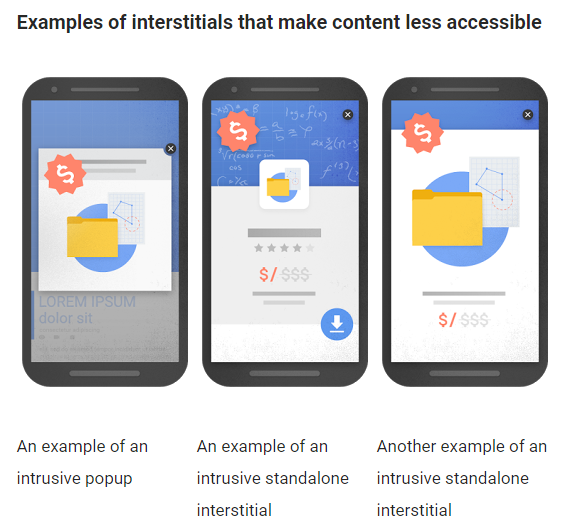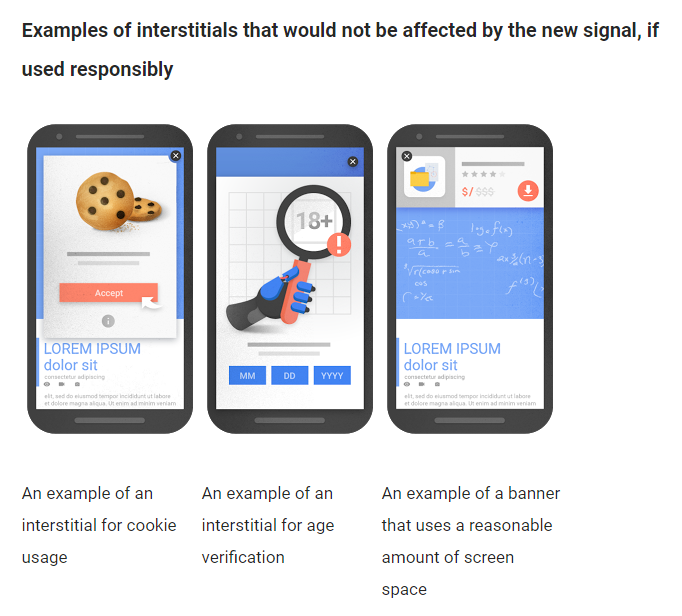Google introduces ranking penalties for intrusive interstitial ads
Google has continued its quest to improve the experience for users by introducing penalties for websites featuring ads which are perceived as overly intrusive.
August 24, 2016

Google has continued its quest to improve the experience for users by introducing penalties for websites featuring ads which are perceived as overly intrusive.
One of complaints over mobile advertising on websites has been intrusive interstitials which block content and in some cases are difficult to remove. The content maybe below the advert, but the difficulty in accessing this content may result in users leaving the website altogether. Moving forward, websites which utilise these advertising techniques will be penalised by the internet giant and maybe relegated down search rankings.
“Pages that show intrusive interstitials provide a poorer experience to users than other pages where content is immediately accessible,” said Google Product Manager Doantam Phan on the company blog. “This can be problematic on mobile devices where screens are often smaller. To improve the mobile search experience, after January 10, 2017, pages where content is not easily accessible to a user on the transition from the mobile search results may not rank as highly.”
Examples of the pages which would fall foul of Google’s new criteria include:
Showing a popup that covers the main content, either immediately after the user navigates to a page from the search results, or while they are looking through the page.
Displaying a standalone interstitial that the user has to dismiss before accessing the main content.
Using a layout where the above-the-fold portion of the page appears similar to a standalone interstitial, but the original content has been in-lined underneath the fold.
While it could be seen as a slight contradiction from a company which generates almost 90% of its revenues from advertising, Google is penalising those who seemingly give preference to advertising over content. An advert which would meet Google’s standards is one which takes up an acceptable amount of the screen. Though what is acceptable has not been explicitly stated, the company has given visual examples which are displayed at the bottom of the story.
Alongside this announcement, the team has also announced it will now remove the mobile-friendly label on it search rankings. Two years ago the internet giant started adding a mobile-friendly label to help users find pages where the text and content was readable without zooming and the tap targets were appropriately spaced. Mobile friendly sites were labelled and promoted up the rankings, and it would seem to be a move which was quite effective. As 85% of all pages in the mobile search results now meet the criteria the label will be removed, though the mobile-friendly criteria will continue to be a ranking signal.
Elsewhere in the advertising industry, Russian smartphone browser maker Yandex has introduced a complaint button for reporting annoying ads in the alpha version of its browser for Android OS. The company has billed the technology as machine learning; however there seems to be little evidence of this. If the ‘annoying’ button is clicked, a message is sent to Yandex, which then relays the message onto the advertiser. The feedback is used by advertisers to improve messaging to consumers.
While this could generally be deemed as a useful feature by consumers, the AI element seems minimal as the machine is not taking any direct actions to improve the experience for the user. It would appear Yandex is jumping on one of the industry’s more popular buzzwords.


About the Author(s)
You May Also Like








.png?width=300&auto=webp&quality=80&disable=upscale)


_1.jpg?width=300&auto=webp&quality=80&disable=upscale)


.png?width=800&auto=webp&quality=80&disable=upscale)